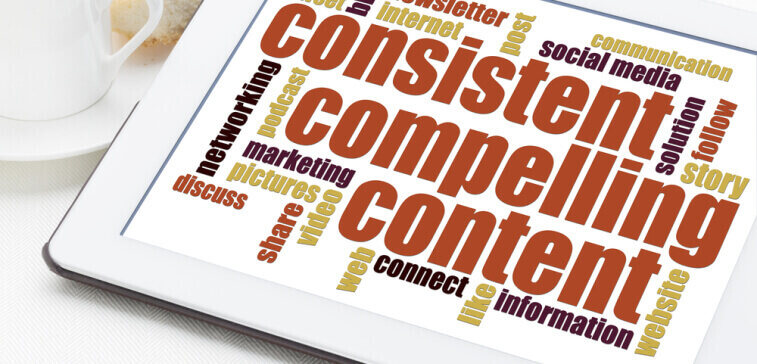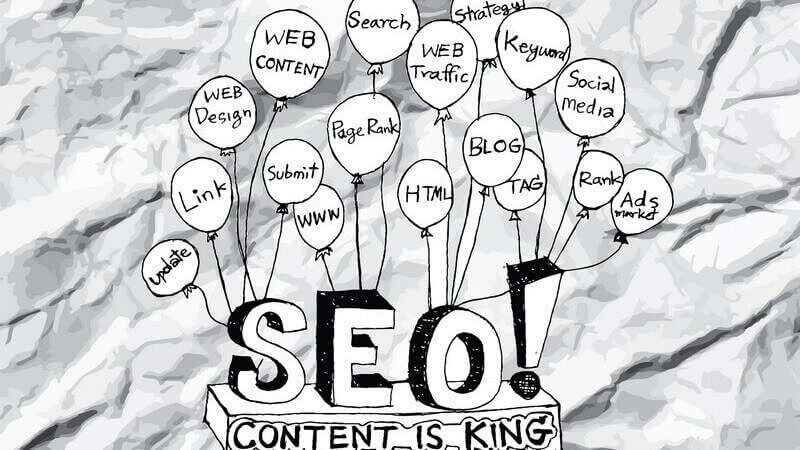I recently got back from the Social Media Marketing World conference. Marketers from 49 countries gathered to network and learn from each other about best practices for social media for business. Some of the information was confirmation of things I am already doing and posting about. But there were also some new tips, tools, and techniques. Equally important was interacting with other marketers to understand their businesses and learn about their successes, challenges, and failures. The world of social media continues to evolve and change quickly. (It was also great to go to a conference for the first time in 25 years that I was just an attendee and not working!)
After some reflection on the conference and recent research I have identified seven key success factors for using social media for business:
- Content is your hub: It’s your compelling content that will engage your audience and cause them to interact with your business or brand. (See our related blog post on compelling content.) And people will pay for your knowledge and expertise if you package it up and distribute it in ways they can easily consume it. It may be a product, but it also may be a service or other format. If you have content that answers a question or solves a problem that others have, you have a hub of knowledge to grow your business. Don’t just think about promoting your product or service on social media. Think holistically about your content. How can you help people? How can you answer their questions? How can you help them save time, be more effective, reduce costs, have more fun, etc?
- Re-purpose your content for multiple platforms of distribution: Once you have compelling content, you can leverage, re-purpose, and package it in multiple ways for people to consume it. You may be using your compelling content to create a lead funnel for a product or service, or you may be a consultant selling your knowledge. Know your core message and let people experience that in multiple ways. You may use it for live events. You may use it for videos and webinars. You may use it for blog posts. You may share parts of it on social media platforms. You may re-package it into speaking engagements. You may write an e-book. You may create a guide or recipes. You may record a podcast. It’s NOT a sales pitch. It’s helping people to answer a question or solve a problem or be entertained in a way that they want to share with others. Think about how you can reach your target customers in various formats on various platforms.
- Use videos and photos – Visual content gains attention on crowded social media platforms. The data show the most engaging Facebook posts are now videos, ahead of photos and status updates. Not only is visual content eye-catching, a picture really is worth a thousand words. People are looking to consume information quickly and easily. Sometimes that is seeing a picture or watching a short video or listening to a podcast while traveling or driving.
- Don’t be on social media, be social: In recent years there was tremendous attention on increasing your number of followers or fans. That didn’t necessarily produce business results. While you want to increase the number of potential customers you interact with, the critical success factor is engaging your audience with your business and brand. Being social makes your business human. People do business with other people who can help them. When your audience interacts, they will see more of your posts organically. They also are more likely to share your compelling content with their friends and followers to extend your reach.
- Participate and leverage others’ audiences: Beyond being social on your own Facebook page or Pinterest Board, host or participate in social media groups. Demonstrate your expertise, compassion, and humor. Your reputations and abilities become visible to the audiences of others hosting the group.
- Email is still the most effective and the most direct: Social media is great for engaging your audience and extending your reach. But the people most likely to become your customers are the ones who are interested enough in your content to opt-in and give you their email address. Email is still the most personal marketing. People are more likely to see and open your email than they are to see your Tweets or Facebook posts. One of the mantras at Social Media Marketing World was “Content is King and Social Media is Queen.” Maybe we should add, “And Email is still the Ace.” Use your compelling content and social media to extend your reach, but also to give you their email addresses.
- Don’t assume people will take action: This was an aha! moment for me when I heard from someone running a YouTube channel. He shared that in the beginning he assumed listeners would subscribe to his channel if they listened to the programs and liked them and got value. It wasn’t happening. So he added an explicit call to action asking his viewers to subscribe to his channel. Immediately there was a spike in subscribers. People don’t take action unless you ask them to! In past job roles I was sometimes amazed working with sales people. I would get the prospect engaged with some compelling content and the sales people would not think to ask for the order as the next step. Sometimes I had to prompt them and then the sale would be made. Don’t assume people will take action on their own. Always have a question, next step, or call to action – visit a web page, share the post, subscribe to the channel, etc.
A final thought: If I have just followed you on Twitter or liked your Facebook page or connected with you on LinkedIn, don’t immediately send me an advertisement or try to sell me something. If someone is just starting to engage with you on social media, it does not mean they are ready to purchase something from you right away. It means that there was some interest in learning more and seeing how you might be able to help them. I think this a key point for many businesses and marketers. The objective of social media for business is not direct sales – although stay tuned as Facebook and others add more ecommerce functionality.
Let me know your experience. Do any of these success factors resonate with you? Have you identified other success factors? If you would like to regularly receive updates, please follow Kauai Digital Marketing on LinkedIn or sign up for our email list on our web site.

















